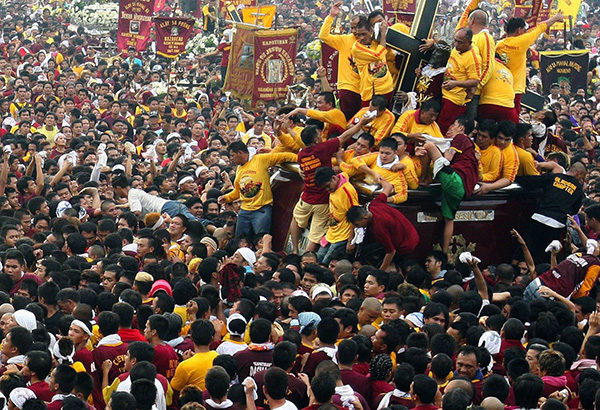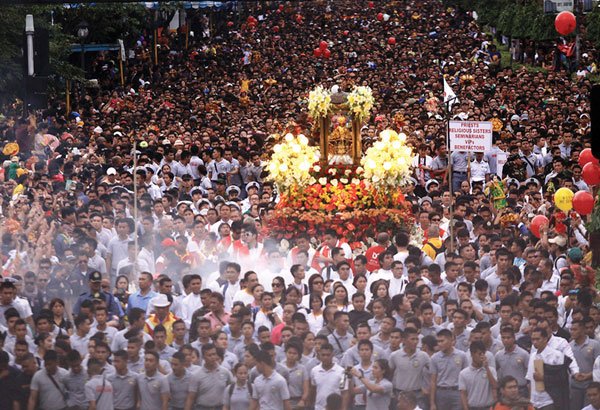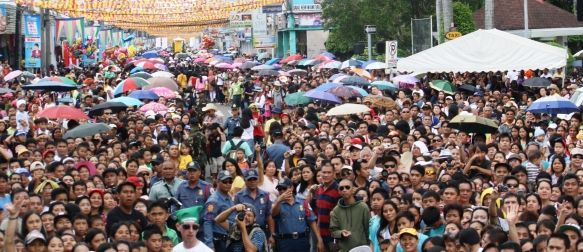Unfamiliar reasons to visit the Philippines

You might have gone to lots of places. But I bet, you've never seen the world if you've not seen the Philippines. One of Asia's fastest growing economy; the Philippines have still a lot to offer. Guests would easily remember the Philippines by its unique hospitality and natural big smiles. But I know you have yet to visit the real Philippines. Let me share with you the must sees and do’s in the Philippines most tourists has yet to appreciate and discover.
Religious Tourism
As a predominantly Catholic country, the Philippines remains rooted in its traditions. But this unique practice of religiosity shows one important aspect of the Filipinos. There are 3 major island groups in the archipelago. In Luzon in the north, Catholics are more acquainted with the image of the Black Nazarene, which they celebrate every year with the traditional "parada" that takes hours with thousands in attendance. In central Philippines in the Visayas, Catholics pay homage to one of the oldest religious and precious icons in the country - the Santo Nino (Child Jesus) of Cebu City. Thousands also join in the traditional procession each year, which is far more orderly to the Feast of the Black Nazarene in Luzon. In Mindanao in the South, Filipinos pay homage to a diverse culture with other denominations, with Islam as a secondary predominant religion.
Honestly, this is just one side of the biggest religious events in the country. Most tourists enjoy the sidelights of these festivals by joining and observing these could bring anyone to a deeper understanding and appreciation why Filipinos are Filipinos. For instance, in Luzon, where millions are cramped in the National Capital Region for greener pastures, life is much more complicated compared to the other areas in the country.

© Philstar
Luzon’s Black Nazarene
Fr. Francis Lucas, president of the Catholic Media Network Corp., in an interview said that the "traslacion” is just an effect of the devotion (to the Nazarene)" which is said to go beyond the "framework of Catholic theology." Lucas said that devotes pray mostly for miracles and healing as they identify themselves with Christ’s suffering as part of their journey of faith. For locals, it might be a yearly routine to join the wave of thousands of devotees, but for any guest and first timer, witnessing such display of faith and religiosity is a scene to behold.

© Philstar
Cebu’s Sinulog
Unlike the Feast of the Black Nazarene every January 9, the celebration of the Sinulog in Cebu is a month long mixture of both cultural and religious activities. The Sinulog is deeply rooted in the history of Cebu City which is also known as the Queen City of the South. Its this same city that the Spanish first established and where they brought with them Christianity, symbolized by the Magellan’s Cross and the iconic image of the Sto. Niño.
The Santo Nino for years remained to be a religious icon venerated by the locals until it became famous. The local government also developed its historical importance as they made a simple religious activity into a grand cultural festival, which was later dubbed as the "Queen of all festivals" every 3rd Sunday of January. Then again, this is just one side of the Sinulog.
While most local and foreign tourists bask themselves in parties and other yearly fun activities, the majority of the locals flock to the streets for a solemn foot procession in prayer. The overwhelming number of devotees shows the strong faith of the locals.

© Google
Festivals of Mindanao
The diverse cultural and religious atmosphere of Mindanao created a much colorful celebration of faith. To name a few, the Kadayawan of the metropolitan city of Davao showcases the major tribes which form the major populace of the biggest city in the country, based on land area. It is said that Kadayawan celebrates life, the bountiful gifts of nature, a wealth of culture, and the bounties of harvest and serenity of living every August. This is also similar to the celebration of Kaamulan in Bukidnon as locals celebrate their colorful past and linage every March 10. However, most of the celebrations are marred by Catholic and Islamic traditions and culture. An uncanny merger, but it bloomed into one of the countries beloved festivals and celebrations.
I am a proud Catholic from Ormoc City in the Province of Leyte in the Visayas. My family has been devotes of the Sto. Niño for as long as I could remember. We conduct yearly pilgrimage to Cebu to visit the image of the Sto. Niño. We always welcome visitors to witness our proud celebration of our colourful culture and heritage through our faith.
.....
THIS BLOG claims no credit for any images posted on this site unless otherwise noted. Images on this blog are copyright to its respectful owners. If there is an image appearing on this blog that belongs to you and do not wish for it appear on this site, please E-mail with a link to said image and it will be promptly removed.
Congratulations @newsranger! You have completed some achievement on Steemit and have been rewarded with new badge(s) :
Click on any badge to view your own Board of Honor on SteemitBoard.
For more information about SteemitBoard, click here
If you no longer want to receive notifications, reply to this comment with the word
STOP